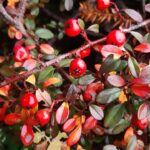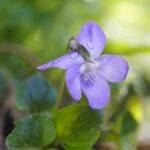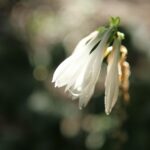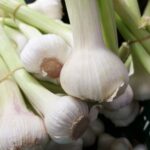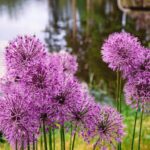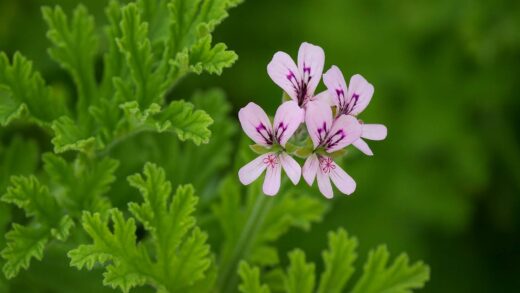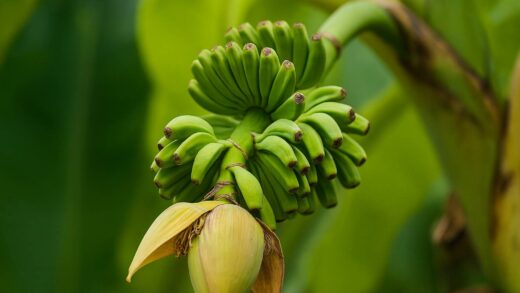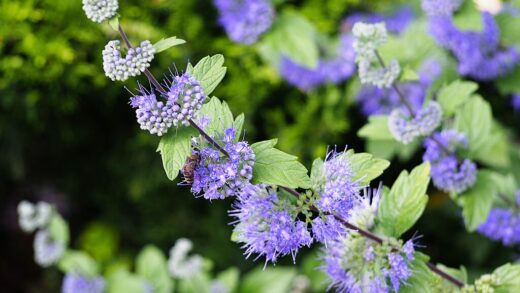While regal pelargoniums are generally robust plants when provided with the correct growing conditions, they are not immune to the threats posed by various pests and diseases. Proactive prevention and early detection are the cornerstones of effective management, as a healthy, thriving plant is inherently more resistant to attack than one that is stressed by poor light, improper watering, or inadequate nutrition. Maintaining a vigilant watch over your plants allows you to spot the first signs of trouble and intervene swiftly, often with simple, non-chemical methods. This approach not only protects your prized pelargoniums but also promotes a healthier growing environment overall.
The most effective strategy for disease and pest management begins with prevention. This involves creating an environment where pathogens and pests are less likely to thrive. Good air circulation is absolutely critical. Avoid crowding your plants too closely together, as stagnant, humid air is a breeding ground for fungal diseases like botrytis. Proper watering techniques are equally important; watering the soil directly and keeping the foliage as dry as possible significantly reduces the risk of foliar diseases. Always use clean pots and sterile, high-quality potting mix when planting or repotting to avoid introducing soil-borne pathogens.
Regular inspection of your plants is a non-negotiable part of proactive care. Make it a weekly habit to closely examine your regal pelargoniums, paying special attention to the undersides of leaves, the junctions where leaves meet the stems, and any new, tender growth. This is where common pests like aphids, whiteflies, and spider mites tend to congregate. Look for the pests themselves, as well as tell-tale signs of their presence, such as sticky “honeydew” residue, fine webbing, or stippled or discolored leaves. Catching an infestation in its earliest stages makes it vastly easier to control.
Sanitation is another key pillar of prevention. Promptly remove any yellowing or dead leaves, spent flowers, and any other plant debris from the pot and the surrounding area. This decaying organic matter can harbor fungal spores and provide a hiding place for pests. It is also essential to use clean, sterilized tools, especially when taking cuttings or pruning your plants. Wiping the blades of your secateurs or knife with rubbing alcohol between plants is a simple step that can prevent the accidental spread of diseases from one plant to another.
When you introduce a new plant into your home or greenhouse, it is wise to implement a quarantine period. Keep the new plant isolated from your existing collection for at least two to three weeks. This gives you time to observe it closely for any signs of pests or diseases that may not have been apparent at the time of purchase. This simple practice can prevent a single infested plant from causing a widespread problem throughout your entire collection, saving you a great deal of time and effort in the long run.
More articles on this topic
Common insect pests
Aphids are one of the most frequently encountered pests on regal pelargoniums. These small, pear-shaped insects can be green, black, or pink and typically cluster on the tender new growth, flower buds, and the undersides of leaves. They feed by sucking sap from the plant, which can lead to distorted growth, yellowing leaves, and a decline in overall vigor. Aphids also excrete a sticky substance called honeydew, which can attract sooty mold, a black fungus that grows on the surface of the leaves and can interfere with photosynthesis.
Whiteflies are another common nuisance, particularly in greenhouse environments or on indoor plants. These tiny, moth-like insects will fly up in a cloud when a plant is disturbed. Like aphids, they feed on plant sap and congregate on the undersides of leaves. Their feeding causes stippling (small yellow or white spots on the leaves) and can lead to leaf drop and a general weakening of the plant. They also produce honeydew, leading to the same issues with sooty mold. Whiteflies reproduce very quickly, so early intervention is crucial for control.
Spider mites, which are technically arachnids rather than insects, are a more insidious pest as they are almost microscopic and can be difficult to spot with the naked eye. The first sign of their presence is often a fine, silk-like webbing on the plant, particularly around the leaf axils and on the undersides of leaves. They cause damage by piercing plant cells to feed, resulting in a characteristic fine, silvery or yellowish stippling on the leaf surface. In heavy infestations, leaves can turn yellow or bronze and drop off. Spider mites thrive in hot, dry conditions.
For most minor infestations of these common pests, non-chemical controls are often sufficient. A strong jet of water from a spray bottle can physically dislodge aphids and spider mites. Wiping the leaves with a damp cloth can also be effective. For more persistent problems, insecticidal soap or horticultural oil sprays are excellent options. These products work by smothering the soft-bodied insects and have a low impact on the environment and beneficial insects. Thoroughly coat all surfaces of the plant, especially the undersides of the leaves, and repeat the application as directed on the product label.
More articles on this topic
Fungal and bacterial diseases
Botrytis blight, commonly known as grey mould, is perhaps the most significant fungal disease affecting regal pelargoniums. It thrives in cool, damp, and humid conditions with poor air circulation. The disease appears as fuzzy, greyish-brown mould patches on flowers, leaves, and stems. It typically attacks fading flower petals first and can quickly spread, causing tissues to become soft and rotten. Prevention is paramount and involves ensuring good air circulation, avoiding overhead watering, and diligently removing all dead flowers and leaves.
Pelargonium rust is another fungal disease, which appears as small, yellow spots on the upper surface of the leaves. When the leaf is turned over, you will see corresponding raised, brownish, spore-filled pustules. In severe cases, the affected leaves will turn yellow and drop prematurely, weakening the plant. This disease is favored by mild, humid weather. To manage rust, remove and destroy affected leaves as soon as you see them, avoid getting the foliage wet, and ensure good spacing between plants for air movement.
Bacterial blight is a serious disease that can be devastating to pelargoniums. It is caused by bacteria that enter the plant through wounds. Initial symptoms include small, water-soaked spots on the leaves that quickly enlarge into larger, V-shaped or angular, brownish-black lesions. The infection can spread into the stems, causing them to turn black and rot from the inside out, leading to the collapse of the plant. There is no chemical cure for bacterial blight, so prevention and sanitation are the only effective measures. Always use sterile tools, and if a plant becomes infected, it should be removed and destroyed immediately to prevent its spread.
Root rot and stem rot are common problems almost always linked to overwatering and poorly draining soil. These conditions are caused by soil-borne fungi or water molds that attack the plant’s root system in anaerobic (low-oxygen), waterlogged conditions. The symptoms above ground include wilting, yellowing leaves, and stunted growth. The roots themselves will be brown, soft, and mushy instead of firm and white. Prevention is the only cure: use a sterile, fast-draining potting mix, ensure your pots have excellent drainage, and always allow the soil to dry out between waterings.
Viral diseases
Viruses can also infect regal pelargoniums, though they are generally less common in a home growing environment than fungal or bacterial diseases. Plant viruses are systemic, meaning they spread throughout the entire plant, and there are no chemical cures available to eliminate them. The symptoms can be quite varied and may include mosaic patterns (light green or yellow mottling on the leaves), ring spots (circular patterns of discoloration), stunted growth, and distorted or deformed leaves and flowers.
Viruses are often spread from one plant to another by sap-sucking insects like aphids. As these pests feed on an infected plant, they can pick up the virus particles and transmit them to the next healthy plant they feed on. This is another critical reason why controlling insect pest populations is so important for the overall health of your plant collection. A vigilant pest management program is a key line of defense against the introduction and spread of viral diseases.
Another primary method of virus transmission is through propagation. If you take cuttings from a parent plant that is infected with a virus, even if it is not showing obvious symptoms, every new plant you create from those cuttings will also be infected. This is why it is essential to only take propagation material from plants that are known to be healthy and vigorous. Always source new plants from reputable nurseries that practice good sanitation and pest control to minimize the risk of introducing a virus.
If you suspect one of your regal pelargoniums has a virus, the best and most responsible course of action is to discard the plant. Because there is no cure, and because the virus can be easily spread to your other plants, it is not worth the risk of keeping it. Do not compost the infected plant material, as this may not kill the virus. By removing the infected individual, you protect the rest of your collection from potential infection and maintain a healthy growing environment.
Integrated pest management
Integrated Pest Management (IPM) is a holistic and sustainable approach to dealing with pests and diseases. It prioritizes prevention and uses a combination of control methods, with chemical pesticides being a last resort. The foundation of IPM is creating a healthy growing environment, as discussed previously: proper watering, good air circulation, adequate light, and balanced nutrition all contribute to a plant’s natural ability to fend off problems. A healthy plant is a resilient plant.
The next level of IPM is regular monitoring and early detection. By inspecting your plants frequently, you can identify issues when they are small and manageable. This allows for the use of simple, mechanical controls. This could involve hand-picking larger pests, wiping leaves with a damp cloth to remove aphids or spider mites, or pruning out a leaf that shows the first signs of a fungal spot. These physical interventions are often all that is needed if a problem is caught early enough.
If a pest population grows beyond what can be controlled mechanically, IPM then moves to biological and soft chemical controls. This involves using products that have a lower impact on the environment and non-target organisms. Insecticidal soaps, horticultural oils, and neem oil are excellent examples. These products are effective against many common soft-bodied pests but have a shorter residual effect and are less harmful to beneficial insects compared to broad-spectrum synthetic pesticides. Biological controls, such as introducing predatory insects like ladybugs, can also be an option, particularly in a greenhouse setting.
The final step in an IPM strategy is the judicious use of chemical pesticides. These should only be used when an infestation is severe and threatens the survival of the plant, and after other, less invasive methods have failed. If you must use a chemical pesticide, choose one that is specifically labeled for the pest you are targeting and for use on pelargoniums. Always read and follow the label instructions carefully, including all safety precautions, to protect yourself, your family, your pets, and the environment.









